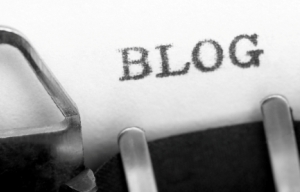When Movement Heals Better Than Words
There are days when talking just doesn’t work. People try, sure, but sometimes the words don’t land or don’t even show up. Not everyone can name what’s wrong. Not every feeling is ready to be explained. And in those moments, oddly enough, movement starts doing the job. No analysis, no conversation.
You notice it in games especially. Someone logs in, doesn’t say much, opens the same level again. No goal, no urgency. Just the loop. It’s not about winning or ranking up. They’re just there, pushing buttons, moving through digital space because it feels better than sitting still. For some, this is where things settle, slowly. If that sounds familiar or if you're curious about how online play creates space for quiet healing, click here to explore the overlap between motion and emotional reset.
What movement does that words don’t
Sometimes the brain won’t cooperate. You sit with thoughts too loud to speak and too tangled to sort. And while words don’t help, doing something with your hands starts to shift the tension. People walk, clean, press keys, tap buttons — not for results, but for rhythm.
It calms the nervous system without needing logic.
The body feels engaged without needing a reason.
There’s no pressure to share or explain anything.
Physical rhythm creates space where emotion can breathe.
Motion interrupts mental spirals before they deepen.
It doesn’t need to be a workout. It just needs to be something. Even tiny repetitive actions can reset what words can’t.
How it plays out in online games
Gaming creates a structure where people can move even when they feel stuck. Someone queues up for a match they’ve played a hundred times. They know every outcome, every shortcut. But that’s not the point. It’s the rhythm. The loop. The steady feedback that says, “You’re still here. You’re still doing something.”
Players often return to the same task not for novelty but for stability. That mission they don’t need to finish. That level they’ve already mastered. They’re there because the act itself feels like breathing.
Moments where motion becomes medicine
There’s no big ceremony about it, but these are the moments where movement ends up saying more than words could:
After something upsetting when the brain’s still spinning
During long quiet nights when nothing feels right
After panic or anger when sitting still just makes it worse
When you’re too tired to explain but need to stay present
When the goal isn’t clarity, just not feeling worse
In those spaces, even low-stakes gaming feels like anchoring.
What counts as healing doesn’t have to look dramatic
It’s easy to underestimate small repetitive actions. But they matter. Lining up items in your inventory. Farming for nothing in particular. Walking laps in an open-world game. These don’t look like progress, but they give you back a sense of direction. Quiet. Focus.
This kind of healing shows up slowly. And it usually doesn’t look impressive. But it works because it asks nothing. Just presence.
Even small things like:
Rearranging your gear
Clearing space in your digital home
Finishing a round you don’t care about
Clicking through dialogue just to keep going
Running for the hundredth time just to feel control again
That’s movement. And it does more than it seems.
There’s room for both
None of this means words don’t help. They do. But they aren’t always the first step. Sometimes people need to move first — before they speak, before they process, before they explain. And sometimes, moving is enough all on its own.
Gaming just happens to give people a place where movement feels safe. It gives them control when nothing else feels steady. And even if it doesn’t solve anything big, it gives them a place to start again. That’s not a small thing.



No comments:
Post a Comment